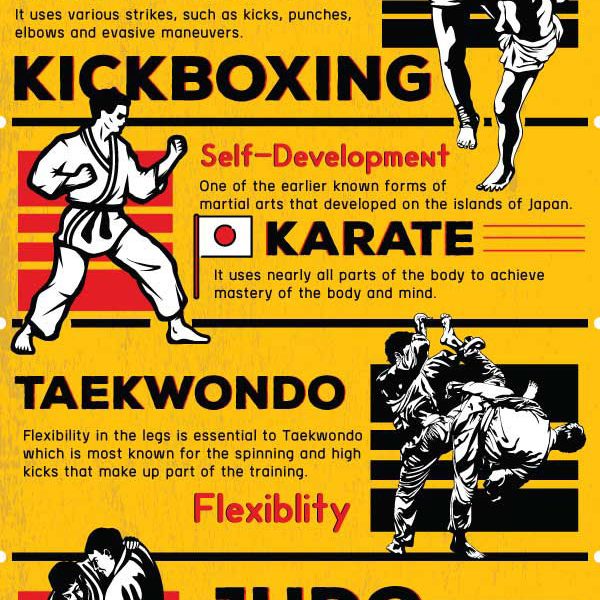Explore The Fascinating Evolution Of Martial Arts, Tracing Its Origins From Old Customs To The Innovative Approaches Practiced In Contemporary Times. Expose The Mysteries That Lie Within This Long-Lasting Technique
Explore The Fascinating Evolution Of Martial Arts, Tracing Its Origins From Old Customs To The Innovative Approaches Practiced In Contemporary Times. Expose The Mysteries That Lie Within This Long-Lasting Technique
Blog Article
Created By-Delaney Sommer
Enter the globe of martial arts, where ancient origins and modern methods clash in a thrilling journey of discipline and self-discovery.
As federal criminal court attorneys delve into the background and advancement of this fascinating art form, prepare to be captivated by the social influences, technical developments, and profound ideology that have actually shaped it over centuries.
From the combat zones of old people to the training grounds of today, martial arts have stood the test of time, continuously adapting and growing.
Each strike, each movement, brings with it the weight of countless years of tradition and wisdom, passed down via generations. This is a story of resilience, of warriors that sought not just physical expertise, yet likewise inner strength and consistency.
Join https://www.pewtrusts.org/en/research-and-analysis/blogs/stateline/2022/06/21/public-defenders-were-scarce-before-covid-its-much-worse-now on this amazing expedition as we uncover the keys, the tales, and the transformational power of martial arts.
Prepare to be inspired, tested, and forever transformed by the history and development of martial arts.
Cultural Impacts on Martial Arts
As you explore the history and advancement of martial arts, you'll promptly discover the interesting ways in which social influences have formed these combat techniques.
From the old civilizations of China and India to the more current developments in Japan and Brazil, martial arts have been heavily affected by the cultures in which they originated.
As an example, Chinese martial arts, such as Martial Art and Tai Chi, are deeply rooted in the approach of Taoism and the idea of Yin and Yang.
In contrast, Japanese martial arts, like Martial arts and Judo, reflect the samurai warrior practices and the values of technique and honor.
In a similar way, Brazilian fighting style, Capoeira, incorporates elements of African dancing and songs, reflecting the cultural heritage of African slaves in Brazil.
https://gooddefenselawyersnearme77766.howeweb.com/30827468/are-you-looking-for-a-criminal-defense-attorney-do-not-settle-your-choice-without-initial-posing-these-essential-inquiries-guard-your-legal-rights-and-accomplish-the-most-durable-protection provide each fighting style its unique qualities yet additionally provide a deeper understanding of the historic and social contexts in which they evolved.
Technological Innovations and Martial Arts
With the increase of advanced weaponry and innovative training devices, you've been able to enhance your skills and adapt to the ever-changing fight landscape.
Technical advancements have changed the means martial arts are practiced and educated. Virtual reality simulations currently permit you to train in realistic combat situations without the danger of physical injury. High-speed cams capture every action, enabling you to evaluate and best your techniques. Wearable gadgets check your heart rate, breathing, and muscular tissue activation, offering immediate responses on your performance.
Furthermore, the growth of specialized devices, such as resistance bands and dexterity ladders, has allowed you to improve your speed, toughness, and agility. These technological advancements have not just made training a lot more efficient but have actually likewise pressed the limits of what is feasible in martial arts, permitting you to get to brand-new elevations in your practice.
The Approach and Principles of Martial Arts
The philosophy and principles of martial arts are deeply rooted in shaping your mindset and instilling discipline, emphasis, and regard in your method.
1. Mindset: Martial Arts shows you to establish a solid and resistant mindset. It allows you to conquer challenges both on and off the floor covering, pushing your restrictions and persevering despite hardship.
2. Technique: Martial Arts demands discipline and self-constraint. Via routine training and adherence to stringent guidelines and techniques, you find out to manage your impulses and create a strong work principles.
3. Emphasis: Martial Arts calls for intense focus and focus. By educating your mind to be existing in the minute, you boost your capability to respond swiftly and successfully throughout battle circumstances.
4. Respect: Martial Arts stresses respect for oneself, trainers, educating companions, and challengers. It educates you to value the skills and experiences of others, cultivating a sense of camaraderie and gamesmanship.
Final thought
Congratulations on finishing your journey with the exciting globe of martial arts! Throughout this expedition, you have seen the abundant background and exceptional development of these fight methods.
From their old origins to the contemporary techniques we see today, martial arts have been shaped by social influences.
https://criminalcourtfederallawye10987.blogchaat.com/30291002/guidelines-for-recognizing-the-appropriate-criminal-law-firm-for-your-instance of technology has also played a substantial role in reinventing the method martial arts are taught and exercised in today day.
However, it is necessary to bear in mind that martial arts are more than simply physical fight. They encompass extensive ideologies and assisting principles that surpass the mere act of combating.
Take a moment to assess this anachronistic journey and appreciate how the tradition of martial arts remains to grow in the here and now, going beyond time and limits.
